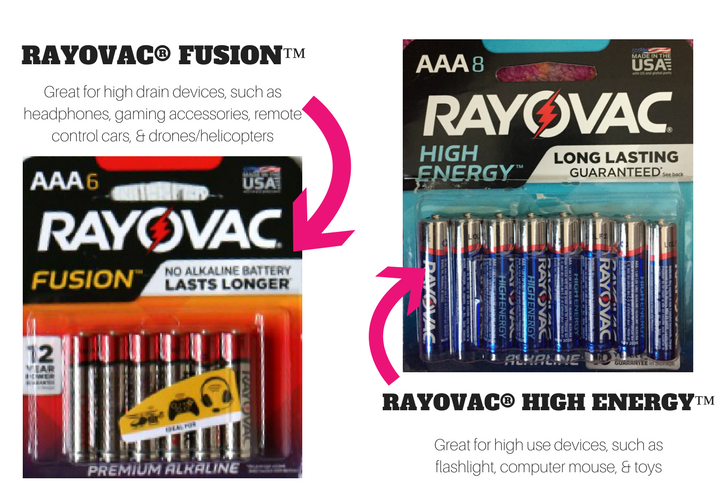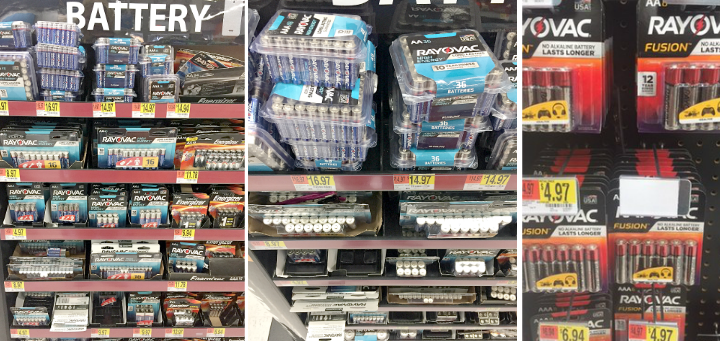This shop, Earthquake Kit, has been compensated by Collective Bias, Inc. and its advertiser. All opinions are mine alone. #PoweredByRayovac #SureThing #CollectiveBias
When I look at my to-do list, I’ve got an assortment of projects to accomplish. Some small, like water the plants, and others large, such as paint the bathroom. One project that’s been lingering for too long is to create an earthquake kit with all the essentials that we would need in the event an earthquake hit. Living in the Pacific Northwest, we’ve been hearing a lot about earthquakes over the years. Whether in the news or talk with friends, I know we’re in an area that is susceptible to an earthquake someday.
I’ll be honest: SOMEDAY seems far away.
But the reality is preparing for a ‘someday’ is the most important item on my to-do list.
The first step was to create a list of what we may need in the event that an earthquake hits. The standard rule of thumb for natural disaster preparation is to acquire supplies to last at least 72 hours. Three days may not seem like a long period of time, but when a natural disaster hits, it’s significant. My words of wisdom are: don’t’ skip on your food/water supplies and make sure you have the right batteries to hold you over! We stocked our kit with RAYOVAC® HIGH ENERGY™ & FUSION™ batteries, both known for their long-lasting power and stores for up to 10 years!! (5 years for 9v)
Earthquake Kit Essentials
1 Water // Yes, this one is pretty obvious and it’s also the most important thing to have in your kit. A safe amount is one gallon of water per person per day for at least 72 hours for drinking and sanitation purposes.
2 Non-Perishable Canned Food // Stock up on nonperishable canned food to hold you (and your family) over for at least 72 hours. You’ll want to make sure the food is up to date and not yet expired. This may mean that you need to periodically check your earthquake kit cans for expiration dates. Make sure to also include a can opener and silverware. I opted for a variety of foods, chunky soups, ravioli, and beans. Although not necessarily my favorite items, I knew these would keep us full.
3 Battery Powered Radio (with Batteries) // It’s hard to imagine life without instant access to the internet, television or phone. But chances are, if a natural disaster hits, your access will be limited. That’s why a battery powered radio is so important. You don’t know how long you’ll be away from electricity or the ability to charge your phones, so make sure you have a large supply of long lasting batteries, like RAYOVAC® FUSION™, which is recommended for high drain devices, like headphones, gaming accessories, remote control cars, drones/helicopters. (Guaranteed to provide long lasting power in high use devices*)
4 Lighting (with Batteries) // Flashlight was an obvious add to the list, but a battery-operated lantern is another great add. Plan to keep these running for up to 72 hours, so stock up on size appropriate batteries. I’m a fan of the RAYOVAC® HIGH ENERGY™ batteries. These long-lasting batteries are perfect for high use devices like flashlights and lanterns.
5 First-Aid Kit // Along with a standard first-aid supplies, I added dust masks, gloves and over-the-counter pain medication.
6 Batteries // RAYOVAC is my go-to choice for all battery power needs. Not only are they guaranteed to provide long-lasting power in high use devices like flashlights, computer mouse and of course toys, RAYOVAC® batteries last up to 10 years in storage (5 years for 9v). Oh, AND they cost much less than their competitors. Fun fact: RAYOVAC® batteries {except 9V} are produced right here in America (in Fennimore, WI) and have been powering America since 1906.
7 Fire Extinguisher // We keep a fire extinguisher in the bathroom on each floor of our townhouse (3 floors). I moved the one from our main floor bath to our earthquake kit. Make sure to check the expiration date of your extinguisher. (Yep, these do expire.)
8 Tools // This is a tricky one as it’s impossible to predict exactly what you would need, if anything. But some safe bets include: rope, work gloves, matches, & work gloves. You’ll also want to include a wrench and pliers to turn off utilities.
9 Bedding // Since blankets and comforters can take up a lot of space, I chose to store our sleeping bags in our earthquake kit. Ours roll up nicely and can be used in temperatures of -30 degrees. (Yes, this city girl learned how to camp recently!)
10 Clothing // We packed one change of clothing per person. Since the climate in Seattle is pretty temperate, I opted for long one long sleeve shirt & pants, underwear and socks. I also added a pair of old tennis shoes that I was about to throw out and a rain jacket (we are in Seattle after all). The temperature in your area may fluctuate more between seasons so you may choose to include a couple more pieces.
11 Hygienic Supplies // Now I’m not talking about makeup and toiletries, more like the bare essentials. Think: several rolls of toilet paper, hand sanitizer, paper towels and a couple garbage bags.
12 Whistle // The whistle may be used as a call for help. The recommendation is to provide one whistle for each member of the family as you’re taking cover. Make sure you’re able to place it around your neck for easy access.
13 Emergency cash // Depending on the severity of the earthquake, it may take some time for local grocery stores and retailers to operate back at full capacity. This could potentially mean that credit card machines are not operating. Having cash on hand may make any immediate purchases easier.
14 Personal Documents // FEMA created an Emergency Financial First Aid Kit with lots of information of everything you should include. At minimum, it’s important to have access to key medical documents (insurance cards), identification (birth certificates, social security cards, etc.) and financial documents (insurance policies, banking documents).
Now that you’ve got the list of essentials, search your home for items you may already have. I was able to find everything we were missing in one trip to Walmart. You can find RAYOVAC® batteries in the Battery Quad located at the front of Walmart stores near checkout. They can also be found at the checkout aisle. Since we all love a good deal, here’s a couple coupons found in SmartSource and Ibotta. You’re welcome 🙂 .
While these are our essentials that I’m preparing, I realize there will be additional items to include that are unique to our family: supplies for our dog (Reagan) and our son (Declan), medications that we may be using at the time, etc. Make sure to customize your kit to accommodate your (and your family’s) needs.
Storing Your Earthquake Kit
Keep your earthquake kit in one or two easy to carry containers, such as a camping backpack, storage box or waterproof bag. Make sure it’s easily accessible in a cool, dry place such as your basement, garage or closet. It’s also a good idea to have multiple kits, since you never know where you’ll be when an earthquake strikes. We made one for our home and one for our car. Admittedly I wasn’t excited about storing additional items in my trunk, but in the event of an earthquake, roads could be damaged for days making it impossible to get home.
Earthquake Emergency Plan
Write down all the important phone numbers: family, friends, and neighbors, plus our work and school information. Include the number of your electric company so you can get updates.
Decide on a meeting place in your neighborhood in the event that your home isn’t safe to stay at.
Make sure everyone in the family knows where the earthquake kits are stored.
Use flashlights instead of candles to avoid a fire hazard.
Have a place to stay out-of-town if you need to leave your home (with a friend or relative).
Practice your plan!
I’m so glad we’ve got this project complete, but wishing I would have tackled it even sooner. Once we compiled our list of essentials, we simply found the items around the house and shopped for the remaining.
*Money Back Guarantee: Contact 1-800-891-6091 or www.RAYOVAC.com/MBG for more details. Restrictions apply.













Thank you for sharing this! I have been meaning to create an emergency kit, but haven’t yet. As a fellow Seattleite, I understand how important it is to be prepared for a natural disaster. I needed this push, so thank you!
So glad it was helpful! It was on my to-do list for quite some time! Love seeing another Seattleite visiting the blog! ~ Lindsay